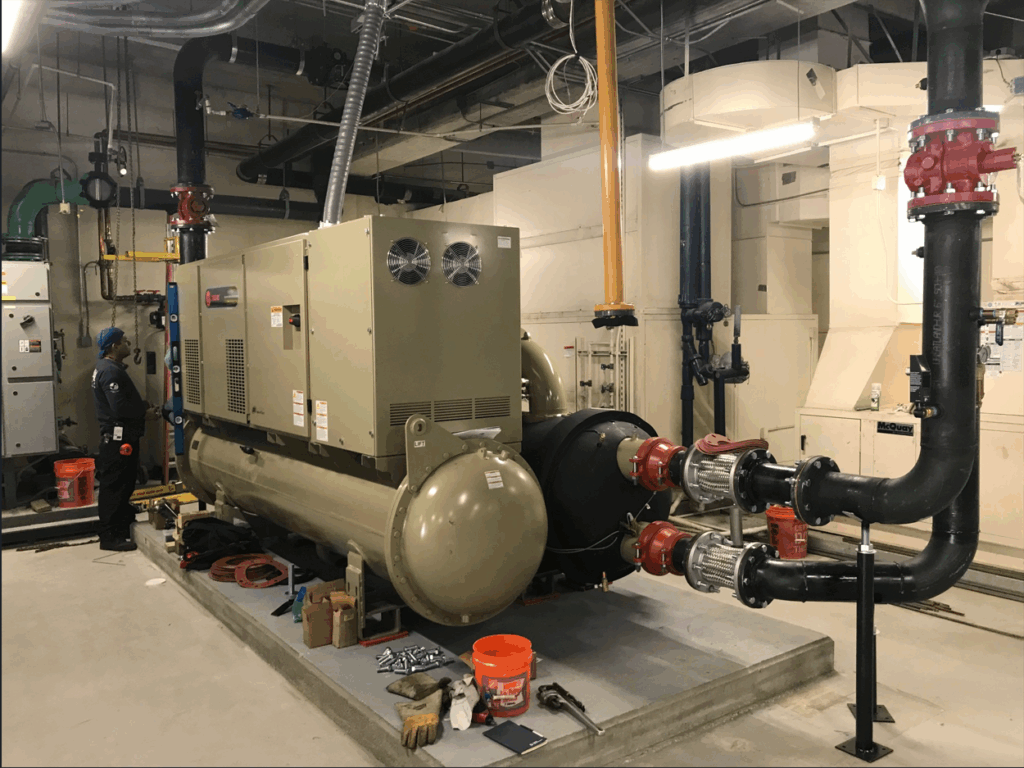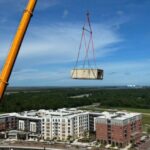Your building’s heating, ventilation, and air conditioning (HVAC) system is more central to your organization than you might realize.
HVAC systems don’t just keep buildings cool in the summer and warm in winter. Comfortable working conditions are linked to higher employee satisfaction and productivity. They impact the air quality, reducing allergens and other airborne contaminants that can affect employee health and lead to fewer sick days.
These systems can also produce unpredictable expenses and inconsistent performance that disrupts daily operations and negatively impacts the bottom line.
This can be especially true in older buildings with outdated equipment.
An aging or inefficient system can silently drain your budget through high energy consumption, while unexpected breakdowns and emergency repairs rapidly drain facility budgets.
The good news? You don’t have to buy a new building or invest in a new HVAC unit to improve performance. You can make your existing infrastructure more responsive and efficient right now for a fraction of the cost.
That’s where modern building management systems (BMS) come in. These computer-operated systems monitor and manage a building’s mechanical, electrical, and safety functions, encompassing HVAC, lighting, energy use, fire safety, and security. By integrating sensors and devices, a BMS provides facility managers with real-time visibility, predictive insights, and enhanced control over comfort and efficiency.
Smart HVAC Integration with Building Automation Systems
Historically, HVAC systems provided basic climate control while also producing inefficiencies, inconsistent temperatures, and unnecessary energy waste.
The past two decades have reimagined HVAC technology, modernizing commercial HVAC systems with innovative technologies, including next-generation thermostats, sensors, and cloud-based management software, that allow for real-time adjustments and predictive maintenance, drastically improving efficiency and comfort.
Today, it’s possible to seamlessly connect your HVAC and environmental control systems with modern building automation systems (BAS).
BAS are the centralized control centers of smart buildings, which use connectivity, sensors, and data processing to automate tasks and adapt to their environment with minimal human intervention.
Modern controls and building automation systems enhance efficiency, optimize performance, and provide seamless climate management for commercial and industrial spaces.
The results are not theoretical. They are practical, observable, and measurable.
The Proven Benefits of Smart BAS Integration
By integrating smart HVAC technologies with a BAS, companies can expect several benefits to their operations and utility costs.
#1 Less Downtime and Fewer Outages
HVAC outages don’t happen every day, but common, relatively minor issues can coalesce to create a complete system breakdown.
When this happens, emergency repairs are inconvenient and costly.
Expect to pay up to 30 percent more for emergency repairs than for scheduled maintenance that can be planned ahead and informed by information from smart technologies and BAS integrations.
BAS systems can detect issues like a failing sensor or compressor early on, before a person would even be able to notice them.
This proactive, predictive maintenance means faster, less expensive fixes and significantly fewer unexpected outages.
The result is a faster fix, less expensive resolution, and few outages overall.
#2 Significant Energy Savings
An optimized system doesn’t work harder than necessary.
The energy savings equation is simple: less energy consumption equals lower energy costs.
Since an HVAC system is often the most substantial utility cost, even modest efficiency gains can produce significant cost savings.
BAS systems achieve this by learning a facility’s routine, knowing when people are or are not doing things. They analyze usage patterns and occupancy levels, then optimize energy efficiency by reducing the output when not needed.
The result? Lower energy costs and a more sustainable operation.
#3 Longer Equipment Lifespans
Replacing an HVAC system is a major capital expense. A BAS helps you protect that investment by extending the life of your existing equipment.
A BAS helps to increase the lifespan of your equipment by reducing the load on it when it isn’t needed. This also helps reduce unnecessary wear and tear from issues like short cycling, where a unit turns on and off too frequently.
By helping you get the most out of your existing equipment, smart controls extend its life and delay costly replacements.
Modernization Made Possible
Modernizing your HVAC system doesn’t have to mean investment in new equipment.
Smart HVAC integration and building automation systems provide a straightforward, powerful, and accessible path to a more reliable and cost-effective facility today.
At Thermal Concepts, we help our clients move beyond the simple thermostat to embrace the power of smart integration and automation.
Ready to experience a smarter, more efficient building? Contact Thermal Concepts today to schedule a consultation!




